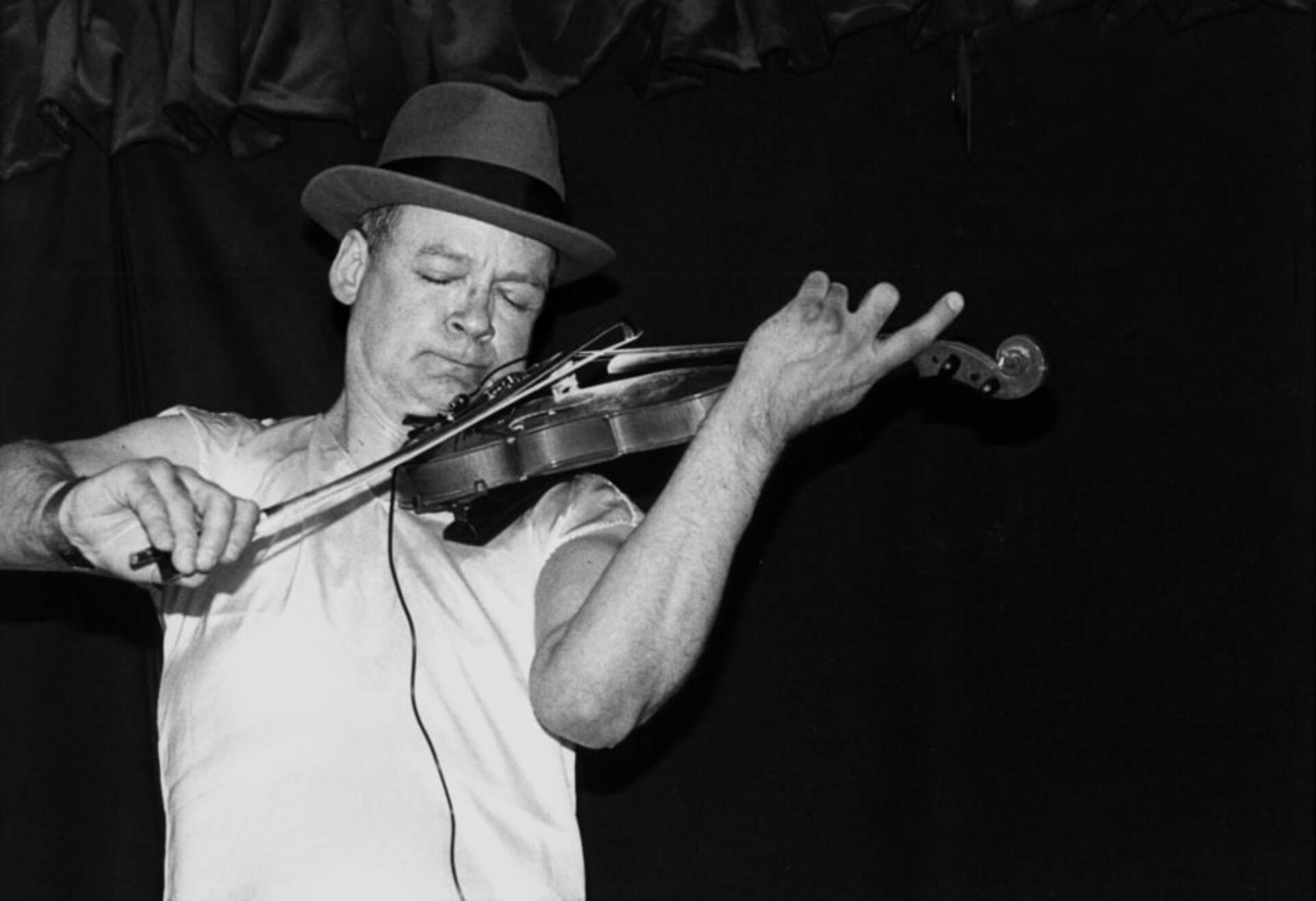
The Last Detail: Tony Conrad's Amplified Drone Strings (2016)
Part of a four-day festival of classical performances with an eclectic twist
Apr 15, 2018 2:00pm — 12:00am
Free with gallery admission
Performed by David Adamczyk (violin), Ana Vafai (violin), Helen Yee (violin), Leanne Darling (viola), Evan Courtin (viola), Jonathan Golove (cello), Stanzi Vaubel (cello), Paige Sarlin (cello).
Tony Conrad's Amplified Drone Strings (2016) was composed in March 2016 by Tony Conrad in collaboration with Paige Sarlin. The composition was a response to a last-minute cancellation of a solo live performance at Big Ears Festival. The intent of the piece was to present Tony Conrad’s live solo work without the presence of Conrad himself. It consists of a multi-tracked violin recording that Conrad produced for a solo performance in 2010. This recording is accompanied by an ensemble of live string musicians. The musicians utilize Conrad's specified techniques in their execution of the live accompaniment, playing a single chord for 48 minutes of the 50-minute recording. A modified version of Tony Conrad’s live solo repertoire, TCADS represents his unique approach to drone music, alternate tunings, and carefully articulated musical intervals.
This specific presentation of Tony Conrad's Amplified Drone Strings (2016) will be performed by a Buffalo-based string ensemble led by Jonathan Golove, a long-time collaborator of Conrad.
Founded by Jonathan Golove, The Open! String Ensemble is an exciting new project, begun in the Fall of 2015. As its name suggests, it is a group with a collaborative orientation, open to players of all string instruments. Not only do they combine bowed and plucked instruments which seldom play with one another in traditional chamber music contexts, they hope to provide a welcoming atmosphere for strings from around the world. The arrangements of the group's repertoire are created collectively and allow for improvisatory freedom.
Representative repertoire includes compositions by Godspeed You! Black Emperor, Explosions in the Sky, Mogwai, Sigur Rós, Sonic Youth, Yo La Tengo, Beck, Yes, King Crimson, St. Vincent, and Terry Riley's minimalist classic In C. The Open! String Ensemble also performs original works by group members.
About Tony Conrad
Tony Conrad was an internationally influential educator and artist who worked in music composition, film, video, installations, and live performance. After receiving his degree in mathematics from Harvard University in 1962, he moved to New York City, primarily interested in music early on, but quickly gravitating to the city's emerging underground film community. His first film, The Flicker (1966), which consists solely of black and white frames alternating extremely quickly according to a mathematical formula in order to produce a flickering effect onscreen, was soon hailed as a pioneering work of structuralist cinema. A flurry of works followed, some of which were variations on the “flicker film” concept, while others took on various aspects of the physical medium of film, and by the mid-1970s he was experimenting with introducing elements of performance art into screenings.
In 1976 he was invited to join the faculty of the media study department at the University at Buffalo, where he found himself in the company of other major figures in the experimental film and video scene of the day, including Hollis Frampton, Paul Sharits, and Steina and Woody Vasulka. Over the succeeding decades, he has mentored countless young artists in all manner of media.
While in Buffalo, Conrad had also been one of the key forces behind such art organizations as Hallwalls Contemporary Arts Center, Squeaky Wheel/Buffalo Media Resources, the city’s public access televisionstation, the 8mm News Collective, and a number of other grassroots arts and activist groups.
Conrad’s concerts, installations, and live performances have been presented in venues around the world.
In 2012, Conrad was designated one of the Burchfield Penney’s first “Living Legacy” artists.